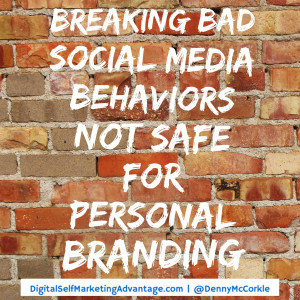Social media marketing is like a really awesome Swiss Army knife. There are a ton of cool tools that branch off of it and a million different tasks you can perform. But your success all depends on how you choose to wield it.
A really solid Twitter marketing strategy is one of those neat tools, and probably the most valuable of them all. Think of it as the actual knife in the Swiss Army knife. The whole reason you bought it in the first place.
What Is a Twitter Marketing Strategy?
This is the plan that marketing teams develop to create, publish, and promote content on one of the most popular social media platforms to date. With 152 million active daily users on Twitter, it’s safe to say that there’s a decent-sized audience to reach out to.
The ultimate goal of most Twitter marketing strategies is to attract new followers and leads. From there, you can raise brand awareness, increase conversions, and boost sales.
Benefits of Engaging on Twitter
It can be easy to turn your nose up at the idea of signing up for an account and building a strong enough profile. That’s a lot of effort for something that a lot of businesses consider frivolous.
But there’s actually a great deal that a Twitter marketing strategy can do for you:
It’s Easy to Operate.
Sharing and promoting content only takes a matter of seconds on Twitter. This is a super easy, user-friendly platform that can be learned fairly quickly. There’s no steep learning curve, making onboarding and profile creation a snap.
It Expands Your Reach.
With millions of users scrolling the platform at a time, your posts will definitely be seen by someone if you follow the right practices. And if you’re creating engaging, click-worthy content, then those easy share features (retweets, mentions, and quotes) will be used.
The more your tweets are shared, the more people are exposed to your brand. Growing brand recognition leads to more customers and a stronger reputation. What’s not to love there?
It Provides Industry Insight.
This is a two part benefit.
First, you’ll be able to watch new trends and audience interests develop in real time on Twitter. People love to share their interests and experiences online, so you’ll always be able to keep a finger on the pulse of your target market.
Secondly, you can also keep an eye on what your competitors are up to. If they roll out a new strategy, you can witness whether it’s a success or failure and learn from their efforts to optimize your own strategies.
It Allows for Direct Customer Engagement.
Twitter has evolved into a customer service channel for many customers. It’s not uncommon for a customer to tweet at a brand with a concern instead of waiting on phone lines for hours.
You’ll be able to engage with your audience directly and quickly on this platform, increasing their satisfaction and your reputation.
You’ll also be able to share current events and updates with them immediately over Twitter, rather than depending solely on email open rates.
It’s Free!
What’s better than that?
Twitter Best Practices
Technically, your Twitter marketing strategy can look like whatever you want it to. That doesn’t mean you shouldn’t follow some tried and true steps though.
Here are a handful of best practices to follow.
Research Your Audience.
This is an essential part of any content strategy. You need to understand your buyer personas and who exactly you’re targeting. If you don’t know what they like or what they’re looking for, then you’ll never be able to create content that’s going to appeal to them.
Do your due diligence and research what sort of trends your target audience engages with. You’ll be able to take some of those ideas and implement them into your own strategy.
Create Amazing Content.
This isn’t always as easy as it sounds. Keeping up a consistent bank of engaging topic ideas requires research and a creative edge.
But, if you’re able to develop some amazing blogs, articles, and other deliverables to share and promote on your Twitter account, you’ll be able to attract a steady stream of interested leads who are looking for exactly what you’re talking about.
Develop a Publishing Calendar.
Social calendars and editorial calendars can be a godsend when operating on platforms that require regular posting. Establish how frequently you should post from your account and when. You’ll have an easier time planning out content for the future that way.
Analyze and Adapt Your Strategy.
This is another “you should already be doing this for every strategy” practice.
Trends and patterns (and sometimes even algorithms) change, and very rarely are you given a two week notice before it happens.
To make sure that your strategy stays at the top of its game, regularly analyze how well it’s doing by looking at relevant metrics. You’ll be able to identify any gaps in the strategy and optimize it so that you can push for even greater results.
How to Use Twitter for Marketing
Once you get started with using Twitter for your business, you’ll want to learn how to navigate the enormous platform where things can go both extremely right and also very, very wrong.
You should operate Twitter in a way that best suits your company’s goals and needs, as they’ll vary from industry, company size, and demands. But here are some steps you can take to get the most out of it.
Customize Your Brand’s Profile.
Your business Twitter profile should be obviously owned by your company. If it can be mistaken for anyone or anything else, then you should probably go back in and make some changes.
Following your company’s branding guidelines, pay attention to these specific areas:
- Handle: Also known as your username, this should have your company’s name in it. (e.g., @Bluleadz)
- Header: This is the background image of your profile page. Use a branded image or logo here.
- Profile picture: This is the image everyone will associate with your brand on the platform. We highly recommend using your company’s logo or initials.
- Bio: You have 160 characters to describe what your company does and how it’s valuable to your audience.
- Website URL: Some companies forget to include this, but that’s a huge mistake. Include your company website so leads know where to go to convert.
Get Verified.
It’s not as simple as it sounds, but if you can accomplish this, then you’re well on your way to being A-list.
Being verified means that you’re recognized as a legitimate corporation on Twitter and not some copy. It’s usually signaled by a blue checkmark badge next to your handle.
You’ll need to apply to get verified, which takes time, but it can be well worth it in the end. You’ll look more trustworthy and important with that little blue check.
Build Up a Following.
You should prioritize building up your follower account since that directly correlates to the number of people engaging with your content. The more followers you have, the stronger your brand recognition and the greater your brand awareness.
Make sure that your content is shareable and encourages engagement (think surveys, contests, and giveaways). You can also partner with social media influencers and create your own unique hashtags to build up a stronger presence as well.
Leverage Twitter Lists.
Twitter lists are organized groups of Twitter accounts put together under certain categories or topics. They’re awfully similar to Facebook and LinkedIn groups.
You can use these lists to keep track of what only specific accounts are sharing. So, for example, if you have a “Competitors” list, you’ll have a special timeline to monitor what your competitors are doing. The same can go for industry thought leaders you follow.
5 Tips for Bolstering Your Twitter Marketing Strategy
If you’ve already got your train rolling down its tracks, great! Hopefully you’ve been able to build up a decent following and have some dedicated followers.
To add a bit more fuel to the fire in your engine, try implementing some of these tricks to really get your Twitter marketing strategy going.
1. Use Twitter Tools to Accomplish More.
Now that the power of social media marketing is common knowledge, there has been a boom in tools and software designed to help elevate your content across social platforms.
There are some Twitter specific ones, like Hootsuite, and some epic hashtag tools that can take your strategy to the next level. Find ones that will work the best for you and invest in making your strategy stronger.
2. Use a Variety of Media.
A common pitfall that companies fall victim to is putting out the same type of content day in and day out.
Break it up by using a wider variety of media and you’ll see a significant change in user engagement. Here are some multimedia ideas you can use to mix things up:
- Video
- GIFs
- Branded images
3. Pay Attention to Peak Times.
Every platform has its “best posting times,” but they can vary depending on the audience you’re looking to target.
In general, for Twitter, peak engagement times are 9 a.m., 12 p.m., and 5 p.m. If you want a lot of exposure, schedule your posts for Wednesdays and Fridays. Be weary of posting high-priority content on Saturdays, as engagement is typically lowest on this day.
Of course, if you notice different trends with your audience, adapt your schedule to meet those demands. Pay attention to your numbers in order to find your sweet spot.
4. Interact with Your Audience.
People love it when brands answer their tweets, direct messages, and mentions. And if you respond quickly, it shows that you’re paying attention. Customers like to know that they have a voice and that you’re listening.
Retweet, like, and @mention your followers to get truly interactive. By doing so, you’ll also get to practice social listening and find out just how effective your reach on the platform is.
5. Leverage Twitter Ads.
Promotional content is a part of the user experience in today’s day and age, so don’t shy away from using Twitter ads. Supplementing your organic efforts can be the extra push your strategy needs.
Look into promoting your tweets or your profile and use keyword targeting to make sure you’re sending the right messaging out. It’s also not a bad idea to see how others are doing it in order to get some inspiration.
Twitter is currently king of the social media platforms at the moment, and its user base only continues to grow. That’s a lot of fish in the sea to be left for others to reel in if you’re not already present on the platform.
If you haven’t already, start developing a Twitter marketing strategy to get your brand name out there and bringing in new leads.
Digital & Social Articles on Business 2 Community
(15)






